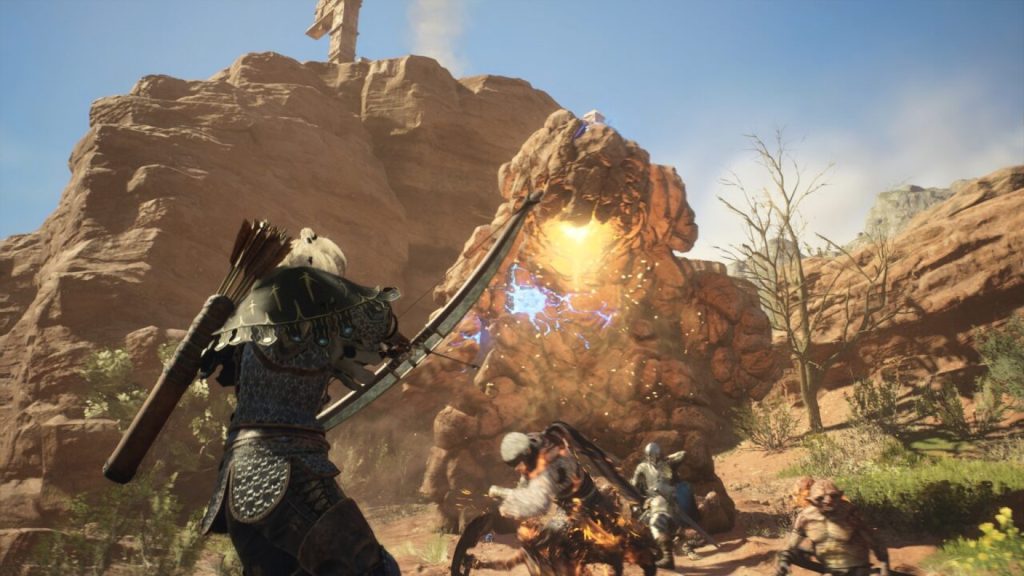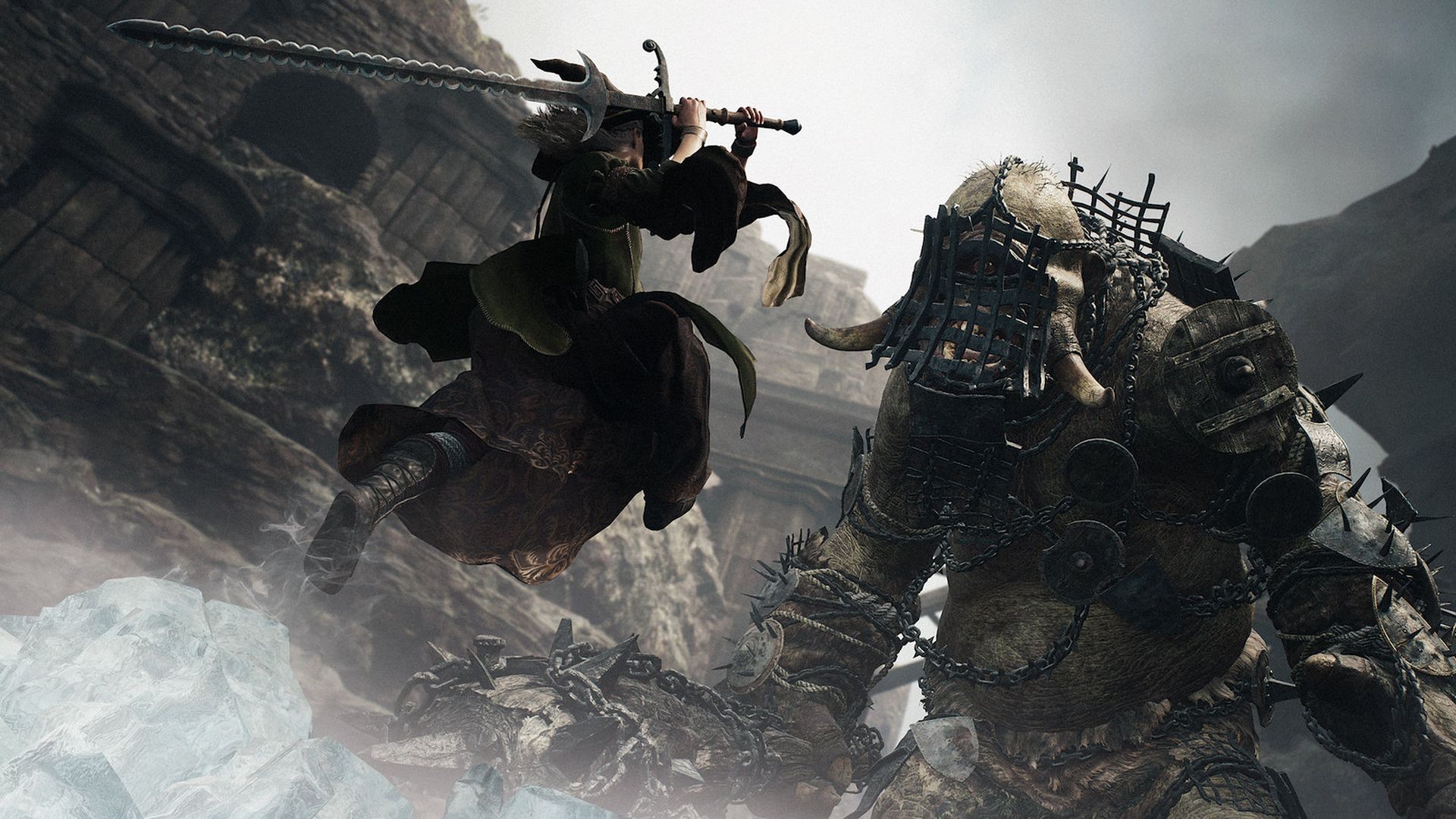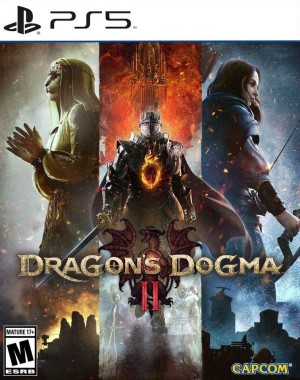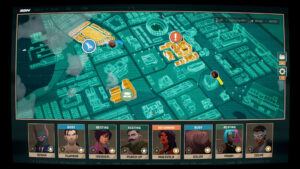
After rave reviews, Dragon’s Dogma 2 is available worldwide and before you could even say “Masterworks all,” it’s at a “Mixed” rating on Steam. At the time of writing this feature, out of the 12,056 user reviews till now, about 40 percent are positive. While there are complaints of players crashing multiple times, poor frame rate performance and the inability to start a new game (which we’ll get to in a bit), many have expressed frustration with the microtransactions.
No, these weren’t announced before the launch – they went live immediately after, out of nowhere. What exactly can you purchase? Rift Crystals used to hire Pawns or acquire special items, available in bundles of 500, 1500 and 2500 for $1, $3 and $5. Wakestones to revive the dead for $1 (how’s that for the value of life?). Portcrystals, which players can warp to if they have Ferrystones. The Art of Metamorphosis – an item for changing the appearance of your character or Main Pawn. Ambivalent Rift Essence to change a Pawn’s Inclination to a random choice, so hopefully, RNG is in your favor.
There’s also the Harpysnare Smoke Beacons – three for the price of $1 – that lure Harpies, which players can grab on to “ascend to greater heights.” Short on gifts for NPCs? Pick up the Heartfelt Pendant for $2. How about that Explorer’s Camping Kit for $3, touted as being lighter than the regular version? At least they become available to purchase in-game afterwards and can even drop from Pawn Quests (provided the other player has one). All of these are single-use items.
To say there’s been backlash would be an understatement. Some have criticized the necessity of such microtransactions, especially in a single-player open-world action RPG. Others have noted that this is a continuing trend for many gaming companies.
Following the avalanche of negative reviews on Steam, the developer noted that it’s looking into fixes for performance and bugs while reminding players that these items are earnable in the game. While this is all well and good, it’s suspect that it would spend months touting the vastness of the world – which is bigger than most open world games out there, and its fast travel restrictions, encouraging players to explore more only to sell Portcrystals to make getting around easier.
The only consolation is that you can only set up to ten at a time, including those available in-game, and that Ferrystones, which aren’t available for real money, are still required. If nothing else, spending real money is a way to get them faster. Ultimately, it’s on the player to decide how little they want to engage with one of the core tenets i.e. the exploration by buying it.
The development team also touted that any NPC of the +1000 in-game can die, causing severe consequences, and even locking out some content. This makes protecting them from monster attacks in towns and reviving them with Wakestones all the more important. It’s a good thing that you can purchase Wakestones, and even if they’re earnable at a steady rate later on, the reason for their monetization is obvious – to cash in on impulse spenders. Maybe it’s meant for those players planning to cull all non-essential NPCs to improve the frame rate in cities. The latter would be a 4D monetization decision, honestly.
Then, you have the Art of Metamorphosis for changing your character’s appearance, which is already possible in-game. However, you still need to spend 500 Rift Points to buy the item in-game and – surprise, surprise – those are also available for real money. Don’t like the look of your character and want to start a New Game to try again?
Tough luck – you can’t without manually deleting the saves. This is reportedly not possible on PC, but the developer said it’s looking into ways for those already playing to be able to restart. When it will become available is unknown.
You could argue that nearly all of these microtransactions are easy enough to pass up (which begs the question, “Why have them at all?”). However, there are some key differences, the first being that Dragon’s Dogma 2 retails for $70. Asking players for that much up front and presenting a whole suite of microtransactions out of the gate doesn’t create the best impression, especially in a single-player-focused game.
The second is that it’s launching with several performance issues, especially on PC. Optimizing a game of this magnitude for hundreds of configurations isn’t the same as implementing microtransactions. Nevertheless, people will look at the extensive development time and wonder why the performance is still so iffy while the developer demands even more money.
Third is the design. When you’re introducing elements that restrict players, like limited fast travel, having paid items that can circumvent them makes you question the point. At best, it’s convenient for those who don’t want to deal with the mechanics. At worst, it feels like the game is designed to be restrictive to make these microtransactions more appealing.

The fact that Portcrystals can be found in-game is irrelevant. Why bother making the effort when you can drop some real money? That directly affects the highly touted emergent gameplay that comes into play when revisiting familiar parts of the world.
One could argue that such microtransactions are necessary to maintain servers for renting out Pawns online over the long term. The problem is that the developer never confirmed if this is the case. It didn’t communicate anything to the public regarding microtransactions before launch, and no, an ESRB rating that says “In-Game Purchases” under “Users Interact” doesn’t count.
The worst part is that disinformation is spreading, including claims that you can only change your appearance by paying real money. It’s all the worse because Dragon’s Dogma 2 is a fantastic game, with everything players could want and more, in a well-designed world with excellent combat. Seeing it dragged down like this because the executives or senior development team members, couldn’t be open about its microtransactions is a shame.
While it’s unlikely that these will affect the game’s long-term success – look no further than the +200,000 peak concurrent player count on Steam – they muddle what should have been a slam dunk for the publisher. It also drags their monetization approach in single-player titles into the spotlight, creating skepticism for the future. Who’s to say that Monster Hunter Wilds, Pragmata or Resident Evil 9 won’t have even more egregious monetization?
You can still enjoy Dragon’s Dogma 2 without ever looking at its microtransactions and explain how they don’t negatively impact your experience and you can also absolutely criticize the company for its shameless handling and implementation of them. Both things can be true and, on occasions like this, essential, especially as triple-A development cycles and budgets continue to rise.
Note: The views expressed in this article are those of the author and do not necessarily represent the views of, and should not be attributed to, GamingBolt as an organization.
















